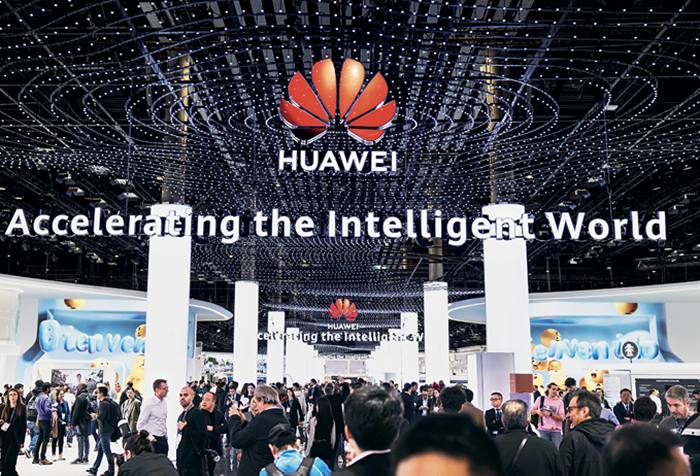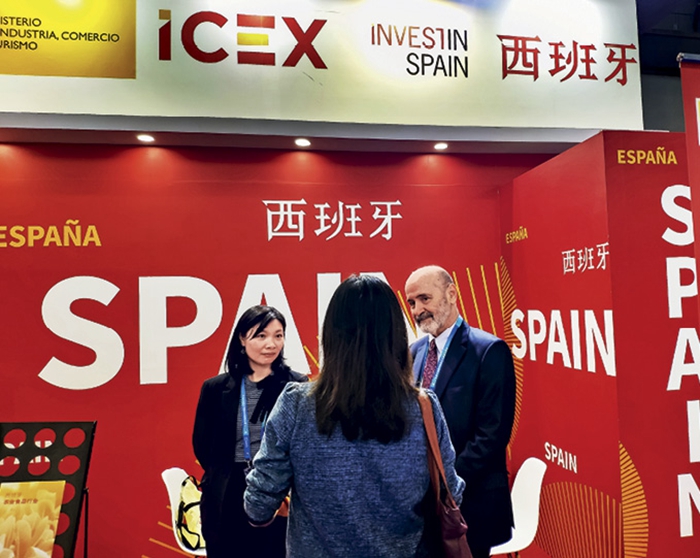Technological exchanges between Spain and China are a key lever for innovation and growth.
The first air -free air -class -class air vehicle in the world, developed by the Chinese manufacturer Ehang, is presented to the Mobile World Congress (MWC) 2024 in Barcelona on April 2, 2024.
Since the establishment of diplomatic relations between Spain and China in 1973, technological exchanges have been one of the most dynamic pillars of their bilateral relationship, especially in the past two decades. Thanks to cooperation in sectors such as renewable energies, artificial intelligence (AI) or biotechnology, the two countries have obtained mutual benefits that have strengthened their competitiveness.
The technological exchange is part of an era of globalization of innovation, where the boundaries between the origin and the application of new technologies are becoming more and more vague. Although Spain and China are integrated in different ways in world value chains, this did not prevent them from finding common ground and collaborating.
Over the past two decades, China’s technological progress has been remarkable. Formerly a simple receptor of foreign technologies, it has become a global power in research and development (R&D), with its own capacities in sectors such as artificial intelligence, telecommunications, in particular with companies like Huawei and ZTE, as well as renewable energies.
Spain, for its part, has also consolidated its position in fields such as biotechnology, clean energy and industrial digitization, establishing itself as a leading player within the European technological ecosystem.

The foldable smartphone in three parts of Huawei at the MWC 2025 in Barcelona, March 6, 2025
A long -time cooperation built
The success of technological exchanges between Spain and China would not have been possible without the support of public policies. On the institutional level, organizations such as the Spanish Ministry of Science, Innovation and Universities, as well as the Chinese Ministry of Science and Technologies, have played a key role in promoting joint research and development (R&D) initiatives, as well as in cooperation between businesses and universities.
Since the signing of their global strategic partnership in 2005, the two countries have implemented a series of regulatory agreements and executives aimed at strengthening their collaboration in R&D and facilitating technological exchanges.
One of the most significant agreements is the memorandum of agreement on scientific and technological cooperation signed in 2011. Subsequently, the state visit of the Chinese president Xi Jinping in Spain, in 2018, led to the signing of a joint declaration as well as several memorandums, instilled a new impetus into the strategic relationship between the two countries.
The joint declaration includes a section dedicated to the development of enhanced cooperation in the fields of science, technology and innovation. It provides in particular to strengthen collaboration between scientists of the two countries, to develop joint research, development and innovation projects (R & D&I) in the context of bilateral programs, and to promote cooperation in strategic and emerging sectors such as quantum metrology, chemistry, new materials, biology, as well as innovation in tourism.
The first memorandum concerns the strengthening of cooperation on third -party markets, the second deals with employment and social security, and the third aims for cooperation in science, technology and innovation in the field of advanced materials.
In addition, the 2020-2025 joint action plan, published in 2018, makes technology one of the fundamental pillars of the strengthening of bilateral relations, with a particular emphasis on the development of digital and sustainable technologies.
In 2023, on the occasion of the 50th anniversary of the establishment of diplomatic relations between Spain and China, the year was also celebrated as the Spain-China year of culture and tourism, which considerably energized bilateral relations. The following year, a memorandum of agreement was signed to encourage joint research and facilitate the participation of scientific and technical personnel in national research projects with high impact.
Thanks to these efforts, Spanish organizations such as the Center for the Development of Industrial Technology (CDTI) have implemented specific documentation and funding dedicated to R & D & I cooperation, as well as the implementation of bilateral technological projects with China, such as Chineka, an industrial cooperation program between Chinese and Spanish technological companies.

The stand of Spain in the exhibition zone of international achievements in scientific and technological innovation at the 25th High Technologies Salon in China, in Shenzhen, November 15, 2023
Tensions and divergences
But despite the advances, bilateral technological exchanges remain faced with several challenges. The most notable of them is the commercial friction between China and the European Union. This situation has created a climate of uncertainty in sectors strongly dependent on technology, such as the automotive industry, as well as in the very field of technology transfer, resulting in increased intellectual property and data security control. This climbing of tensions could ultimately extend to other sectors.
Another obstacle lies in the differences between regulatory and cultural systems. While China adopts a centralized approach to information management and data control, Spain is evolving in a more open regulatory framework, subject to European Union directives. This divergence can cause friction in technological cooperation, especially in sensitive sectors such as telecommunications or artificial intelligence.
The gap in investment in research and development is also a challenge. Chinese investment in R&D has increased considerably in recent years, reaching almost 3 % of its GDP, while that of Spain remains less than 2 %. This difference could limit Madrid’s ability to attract large -scale Chinese technological investments and to establish more competitive alliances.
Opportunities despite the difficulties
In the future, the technological relationship between Spain and China will face major challenges, linked to the evolution of the geopolitical and commercial landscape, as well as regulatory, cultural and industrial differences. However, this relationship also offers important opportunities in emerging fields such as digital transition and sustainable development, without neglecting more traditional sectors such as food or tourism.
In order to maximize the benefits of this cooperation, it will be essential that the two countries are continuing to improve their policies to promote an open and secure technological exchange, while effectively managing the differences likely to emerge.
In conclusion, the Sino-Spanish technological relationship has the potential to become an essential engine of innovation and economic growth in the decades to come, for the benefit not only of the two economies, but also of the European Union and the international community.
*Diego Sande Veiga is a professor at the University of Saint-Jacques-de-Compostelle, coordinator of the Research Line in Economics and secretary general of the Igadi (Instituto Galego de Análise E Documentación Internacional).








